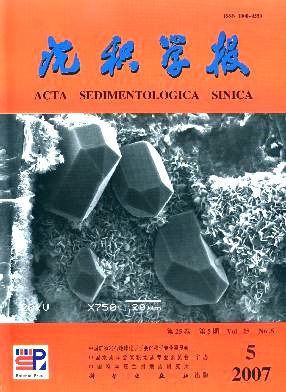Carbon, Oxygen and Strontium Isotope Composition of Calcite Veins in the Carboniferous to Permian Source Sequences of the Junggar Basin: Implications on Petroleum Fluid Migration
- Received Date: 1900-01-01
- Rev Recd Date: 1900-01-01
- Publish Date: 2007-10-10
-
Key words:
- carbon /
- oxygen and strontium isotopes /
- calcite vein /
- reservoir diagenesis /
- hydrocarbon migration /
- the Junggar Basin /
Abstract: The presentlyexplored oil and gas in the central and northwestern Junggar Basin are mainly derived from CarboniferousPermian sequences. In this paper, we try to understand the basic features of petroleum fluid based on analyses on carbon, oxygen and strontium isotope composition of typical calcite veins hosted in source sequences. δ13CPDB of 25 typical calcites ranges from -21.5‰ ~ 5.2‰, and δ18OPDB(δ18OSMOW) locates between -8.1‰ and -22.3‰(22.6‰ ~ 6.9‰). On the other hand, 20 87Sr/86Sr data (0.703 896~0.706 423) are all below the average value of modern seawater (0.709 073). Combined these isotope data and their geologic background, it is suggested that the petroleum fluid in the basin is a mixture of deepsourced hot fluid and oilgaswater. It carried volcaniccharacters by dissolution on the volcano and clastic rocks during hydrocarbon generation and migration. This result indicates that the effect of deep sourced hot fluid must be given enough consideration in the future study of reservoir diagenesis and petroleum migration.
| Citation: | CAO Jian. Carbon, Oxygen and Strontium Isotope Composition of Calcite Veins in the Carboniferous to Permian Source Sequences of the Junggar Basin: Implications on Petroleum Fluid Migration[J]. Acta Sedimentologica Sinica, 2007, 25(5): 722-729. |






 DownLoad:
DownLoad: